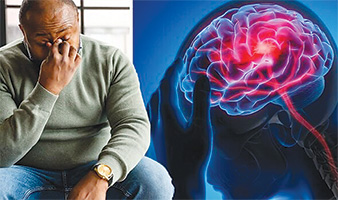May is stroke month
 Stroke is a disease that affects the arteries leading to and within the brain. It is the No. 5 cause of death and a leading cause of disability in the United States.
Stroke is a disease that affects the arteries leading to and within the brain. It is the No. 5 cause of death and a leading cause of disability in the United States.
A stroke occurs when a blood vessel that carries oxygen and nutrients to the brain is either blocked by a clot or ruptures. When that happens, part of the brain cannot get the blood (and oxygen) it needs, so it and brain cells die.
THE TYPES OF STROKE
Stroke can be caused either by a clot obstructing the flow of blood to the brain (called an ischemic stroke) or by a blood vessel rupturing and preventing blood flow to the brain (called a hemorrhagic stroke). A TIA (transient ischemic attack), or “mini stroke,” is caused by a temporary clot.
- Ischemic Stroke (clots) occurs when a blood vessel supplying blood to the brain is obstructed. It accounts for 87 percent of all strokes.
- Hemorrhagic Stroke (bleeds) occurs when a weakened blood vessel ruptures. The two types of weakened blood vessels that usually cause hemorrhagic stroke are aneurysms and arteriovenous malformations (AVMs). The most common cause of hemorrhagic stroke is uncontrolled high blood pressure.
- Transient Ischemic Attack (TIA) is a “warning stroke” caused by a temporary clot. Take this warning sign for stroke seriously — call 911 immediately.
- Cryptogenic Stroke. In most cases, clots that block blood flow to the brain cause a stroke. Sometimes the cause of a stroke can’t be determined. This is called a cryptogenic stroke.
- Brain Stem Stroke. When stroke occurs in the brain stem, it can affect both sides of the body and may leave a person in a “locked-in” state. When a locked-in state occurs, the patient is generally unable to speak or move below the neck.
The brain is an extremely complex organ that controls various body functions. If a stroke occurs and blood flow can’t reach the region that controls a particular body function, that part of the body won’t work as it should.
When you spot a stroke warning sign, act fast. Recognizing the stroke warning signs and calling 911 immediately may make the difference between a strong recovery or long-term disability; survival or death.



Leave a Reply